Customer Product Catalogue (SAF-441)
Product Classification Overview
Information about Products is stored at four levels of detail in the Sense-i System.
At the top level, Resources are assigned to "Categories" such as Products, Materials, Machines, Facilities and so on.
Each Category is broken down into "Groups".
Each Group is further broken down into "Types".
Each Type consists of actual "Product Profiles" or instances of specific Products.
The Categories, Groups and Types are simply ways of arranging and storing information in the Sense-i database to make it easier to search for specific items from the entire list of everything that the company buys and sells.
The process of defining Product Groups, Product Types and Item Types (Instances) within the relevant Resource Category (Products), is detailed in the Define Product Groups & Types document.
The actual Products that your company sells to its customers are called Product Profiles.
The Product Profiles are instances of specific products that appear in the Product Catalogue (also known as Price Lists) and are used on Sales Orders, Sales Delivery Notes, Sales Tax Invoices and so on.
The following diagram illustrates these classification levels.
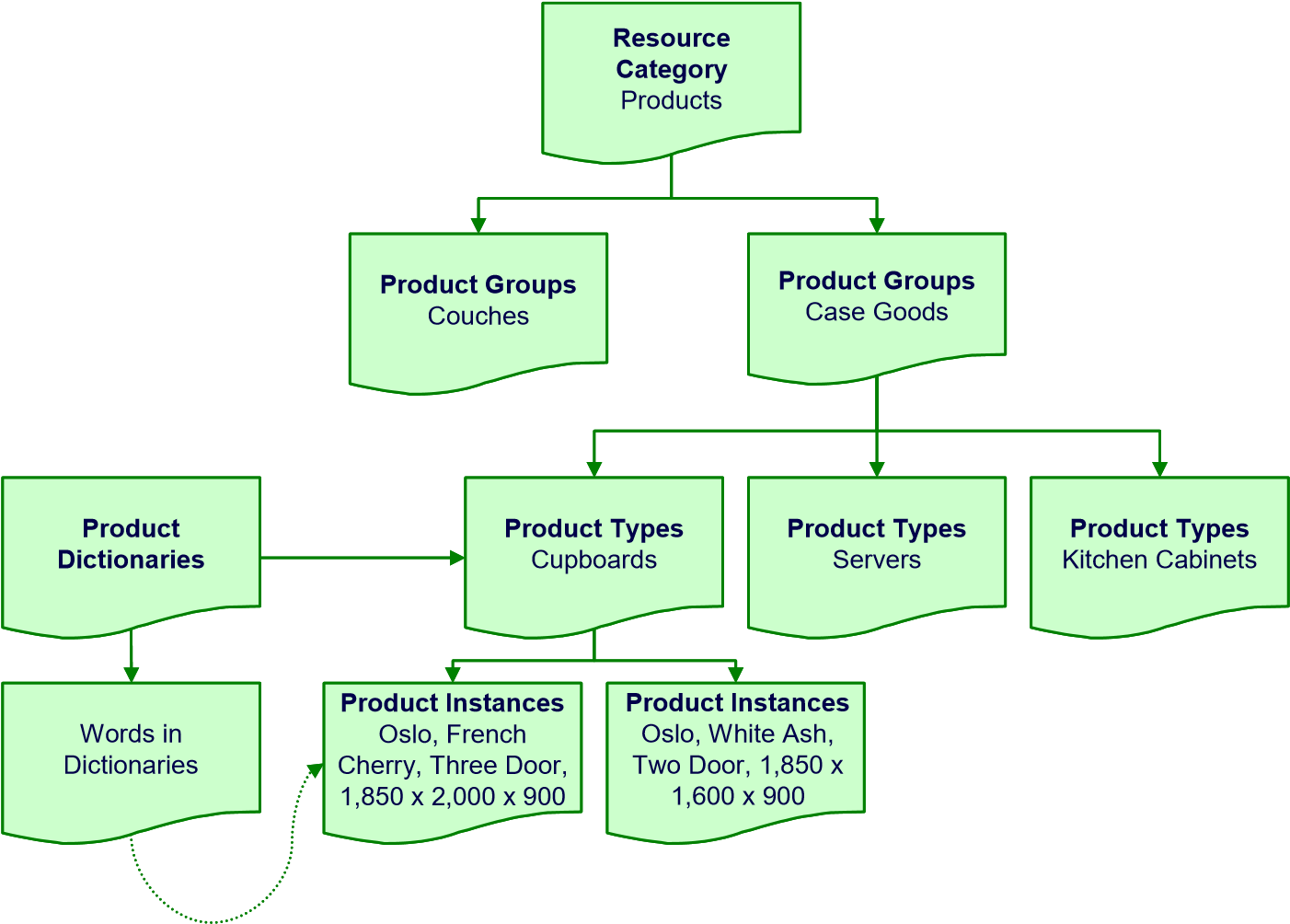
Procedure Guideline
In this procedure we will explain how to search for specific Products in the company's Product Catalogue and how to add new Products to the Sense-i database.
Product Search
-
Select Customer from the main navigation menu, then
-
Select Customer Catalogue from the drop-down menu.
- The system will display a screen titled Maintain Customer Catalogue.
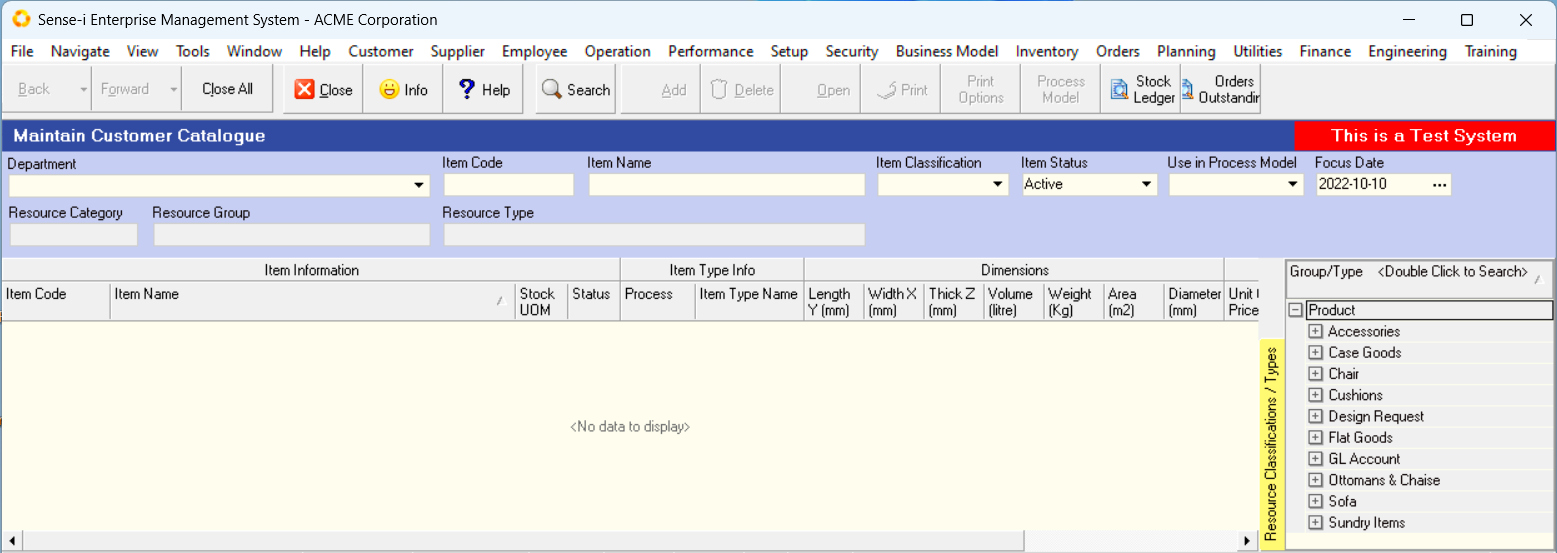
- This screen consists of;
- a Panel at the top called the Search Criteria Panel
- a List at the bottom right displaying the Product Group/Type Panel
- a Grid at the bottom left called the Product Catalogue Grid
The Search Criteria Panel enables you to enter information to search for specific products (this information is called "filters") so that you can reduce the list of Products you see displayed on the screen.

This is useful because Product Catalogues often run into the thousands and finding the specific Product you want to include on a Sales Quote or Sales Order can be time consuming.
On the right of the screen is a panel that lists all the Product Groups and Product Types (defined for the specific Department you have selected) displayed as a tree structure.
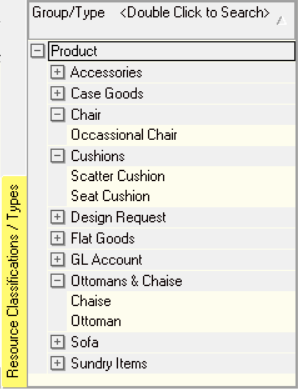
This panel is very useful because at a single glance it enables you to see the entire Product Architecture for all the Products your company buys, makes and sells.
- You must ensure that you select a Department or Company before you search for any products.
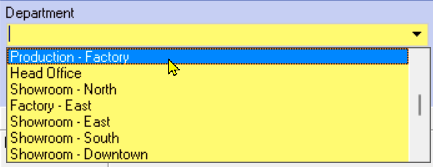
You can filter the list of Products that are displayed on the screen by any of the Product Groups and/or Types in the Product Architecture Panel on the right of the screen.
If you double click on any of the Group or Type records the system will display all matching Products in the Catalogue.
- To search for a specific product, simply double-click on the record in Product Group/Type tree that best describes the Product Group or Product Type in which the specific product you want to work with will be saved.
For example you could select "Ottomans & Chaise", and under this select "Ottoman."
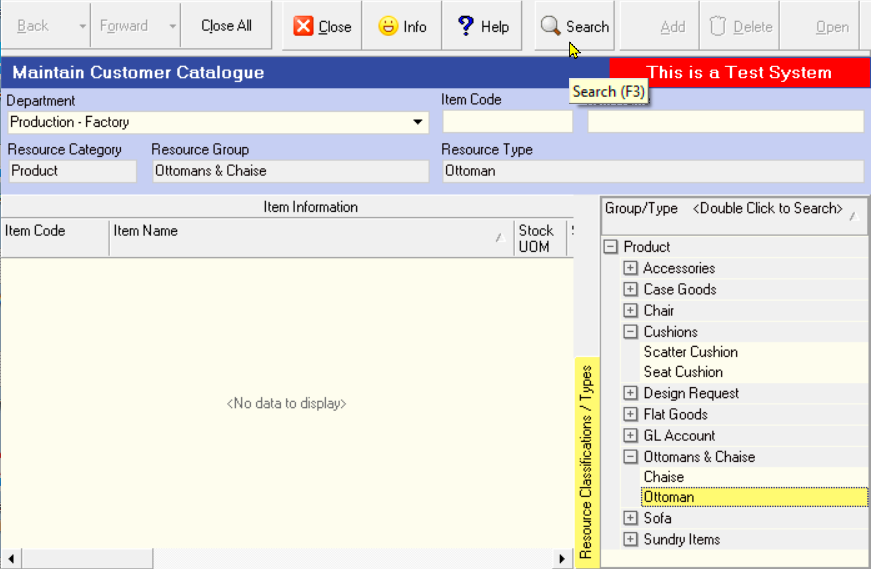
-
Once you have entered the basic Search Criteria, click on the Search button on the form bar.
-
The system will now display a list of all Products that match the "filters" you have entered in the Search Criteria panel.
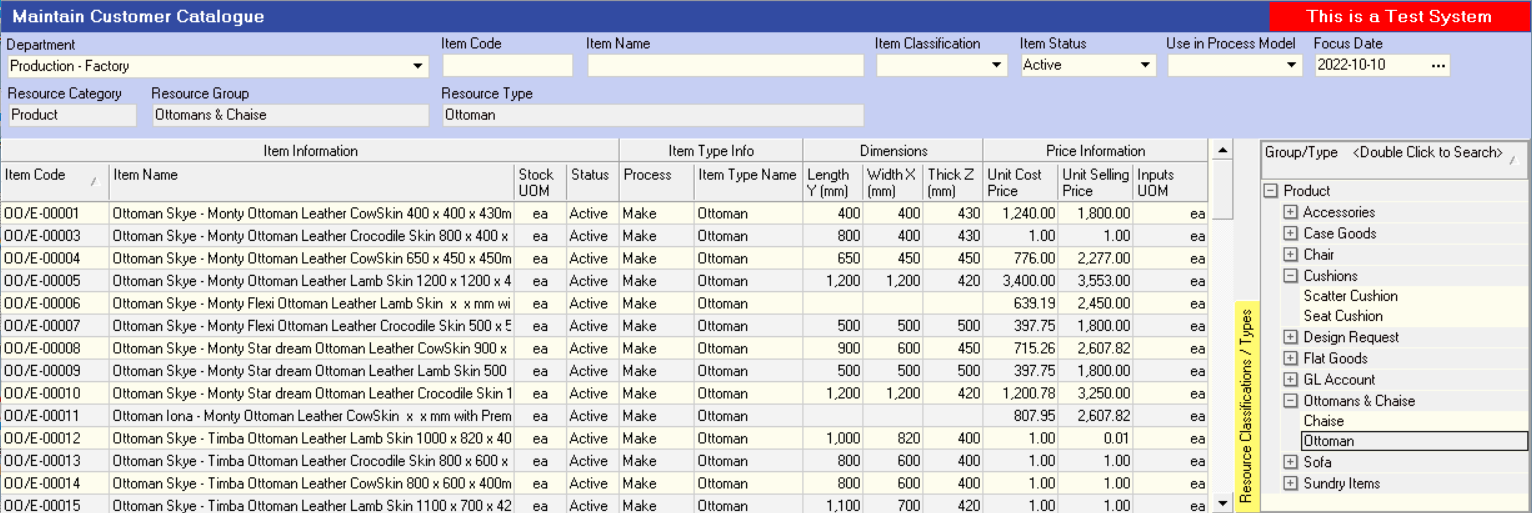
To make the list of items easier to read, right click anywhere in the grid and select the Grid Layout and then set the option for Compact Rows to off.
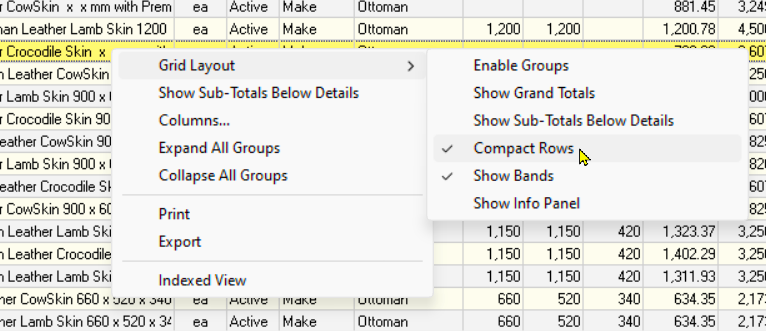
This will change the way Product Names are displayed in the grid by wrapping the names and increasing the height of each row so that you can read the full product name.
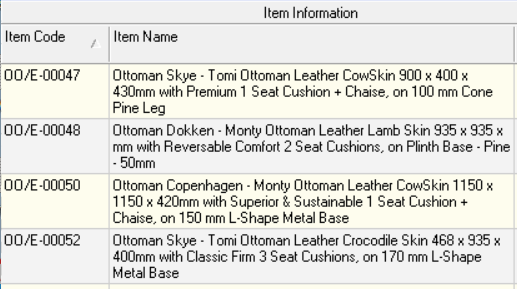
-
This makes it very quick and easy to search through long and complicated Product Catalogues to find the items you wish to include in your Sales Quotes and Sales Orders.
-
You can also search for specific Products by typing the % symbol and then part of a word that is contained in the Product Name in the Item Name field. Then click Search.

-
Finally, as far as searching is concerned, you can use the Quick Filter controls at the top of each column heading.
Refer to the document titled "Working with List Information".
-
This allows you to quickly find any product and display the list according to the information a user has entered about the Length, Width or Height a product.
Add New Products to the Catalogue
-
To add a new item to the Product Catalogue click the Add button.
-
The program will display the Add New Item screen.
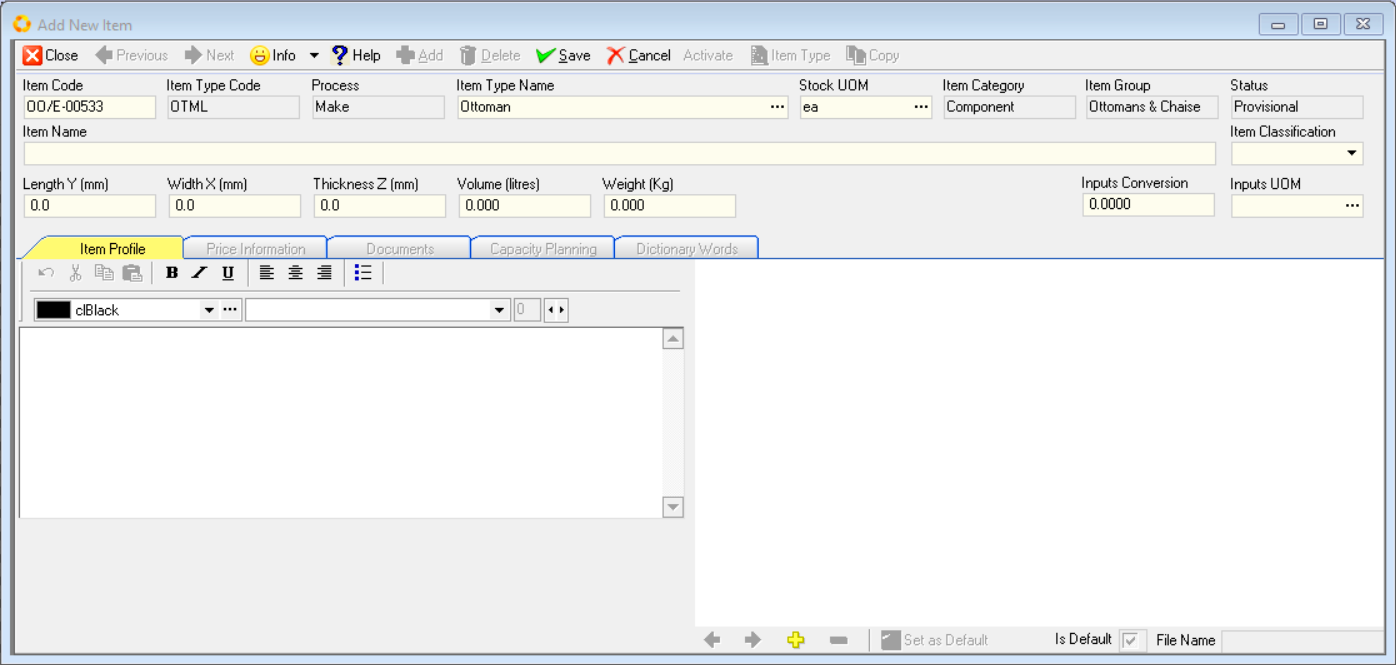
The system will display the Product Type Name you used in the Search before you opened this screen.
- You can change it by clicking on the drop down arrow in the Item Type Name field and selecting the correct Product Type name for which you wish to add a new product to the system.
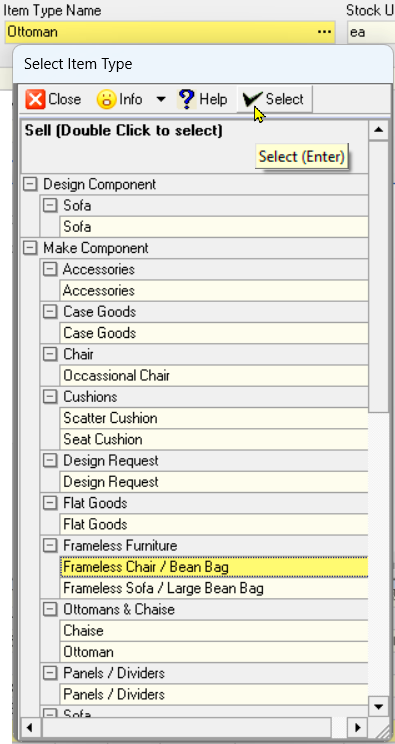
This screen enables you to enter a code, a name, enter the physical dimensions and create a description for the Product you want to add into the catalogue.
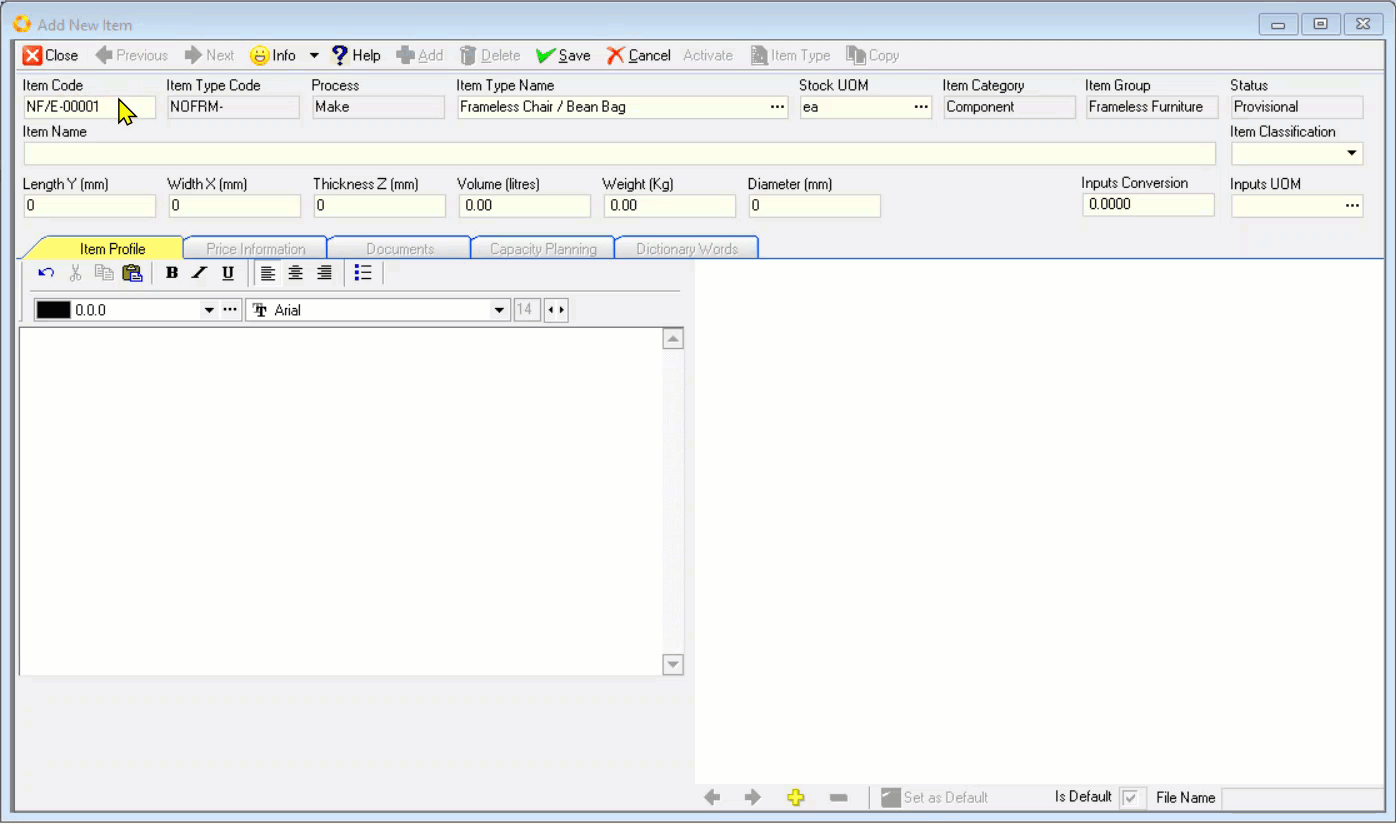
-
The system will automatically define a code in the Item Code field.
The Item Code can be changed. -
Type the name of the product you wish to add to the database in the Item Name field.
If your company is using Dictionaries to define Products and a Name Format has been defined for the Product Type the system will open a window titled Define Product Name.
- Select the relevant Item Classification option from the drop-down list in the Item Classification field.
It is a good idea to mark the item as a Standard, Variation or Custom
Item.
This makes it easier to search for specific products in the
catalogue in future.
-
A Standard item is an item that is sold to the customer as is, without any modifications.
-
A Variation item is a Standard Item that has been changed in someway for a customer. The customer might want different sizes, colour, finish, trims and so on.
-
A Custom item is a unique item that is unlikely to be repeated often.
-
If the item is a standard product, select the Standard category.
If the item is a variation of a Standard Product or a Customised Product, you can select these options from the Category drop down list. This makes searching for products easier in the future. -
If the system requires physical dimensions for the product, enter these in the physical dimension fields that are displayed underneath the Item Name field.
-
You can add Rich Text description for the item you are creating.
Rich Text description is text that has different font styles, sizes, formatting and colour.
To do this, capture the relevant text in the Item description field, under the Item Profile TAB.
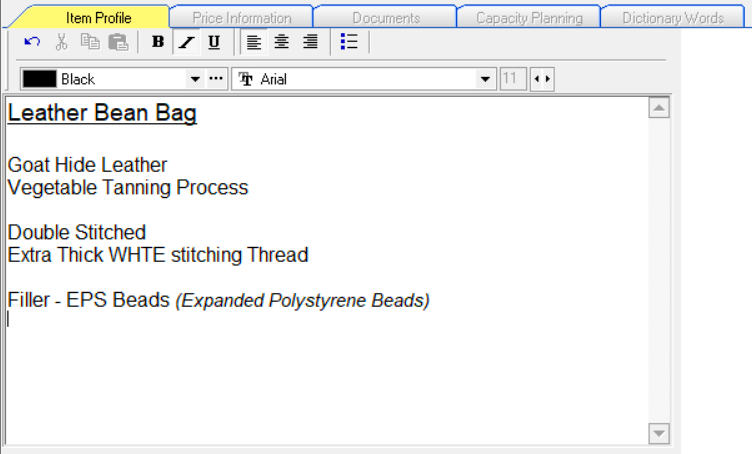
- You can optionally choose to include these Rich Text Descriptions in the Sales documents you print and can also print these descriptions in the Company Price List and Catalogue if you choose.
Add Images to Product Information
You can store one or more images against a product record. Again these can be used when printing Sales Quotes, Delivery Notes, Price Lists or instruction forms.
- To do this, click the yellow + (PLUS) button at the bottom of the screen under the Image Display panel.
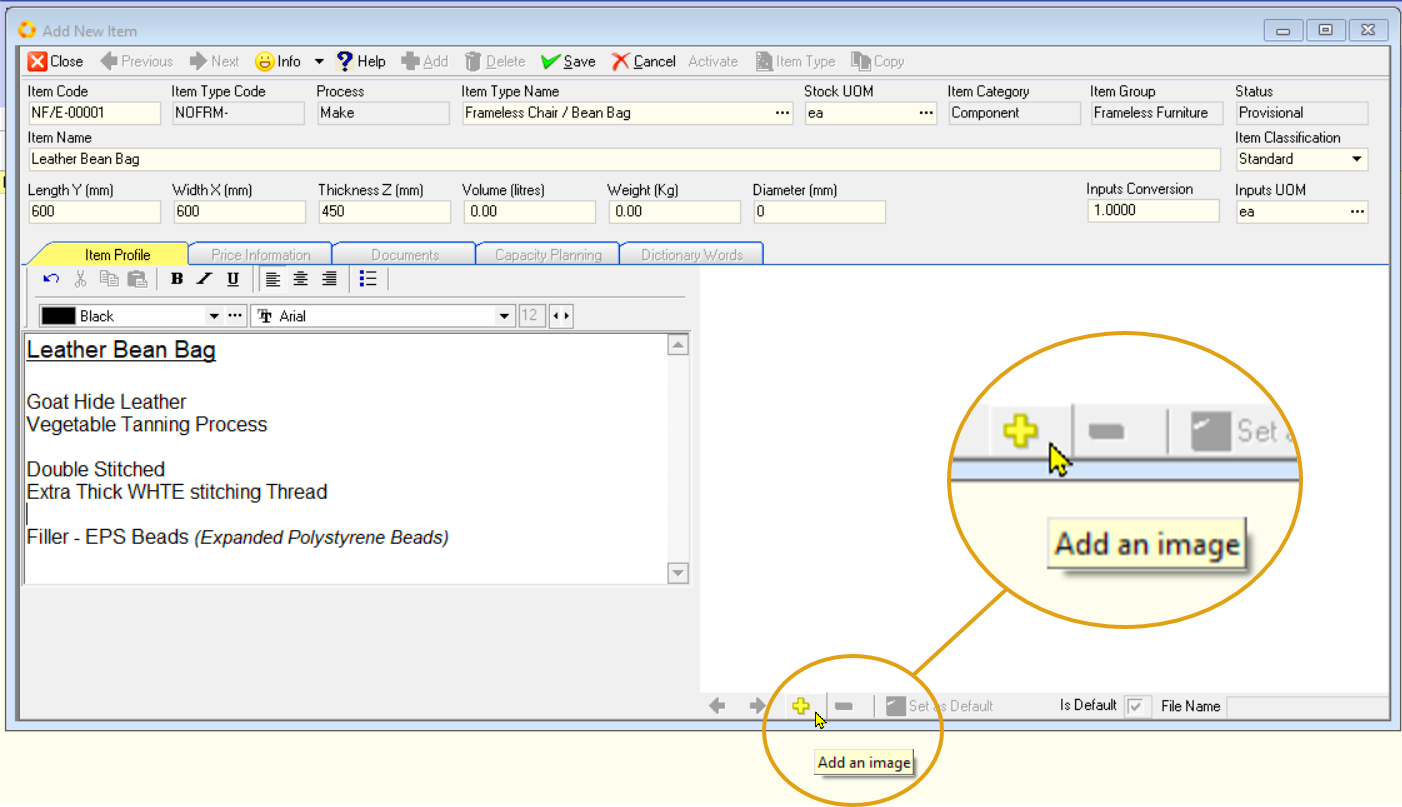
-
The program will open the Windows Explorer screen. This allows you to browse to any file on your computer or network.
-
You might need to change the File Type settings at the bottom of the screen to find the correct kind of file.
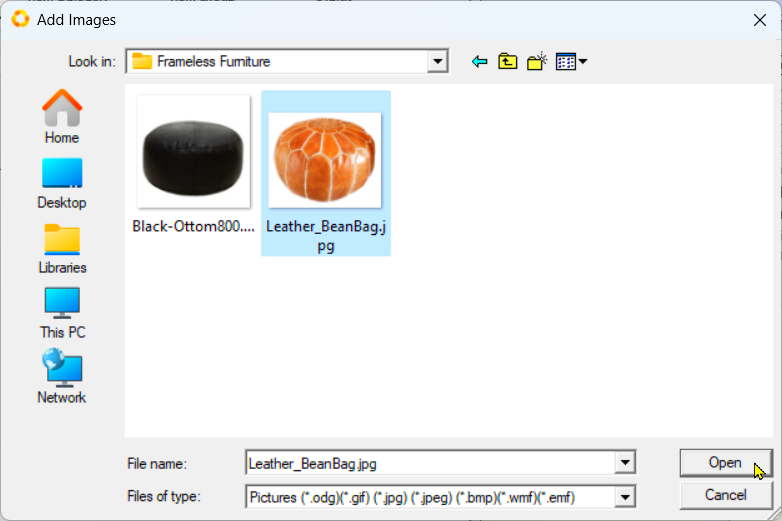
-
Once you have found the correct file you wish to use as an Image for the Product, select it and then click the Open button.
-
The program will close the Windows Explorer screen and will display the image you have selected in the Product Image panel.
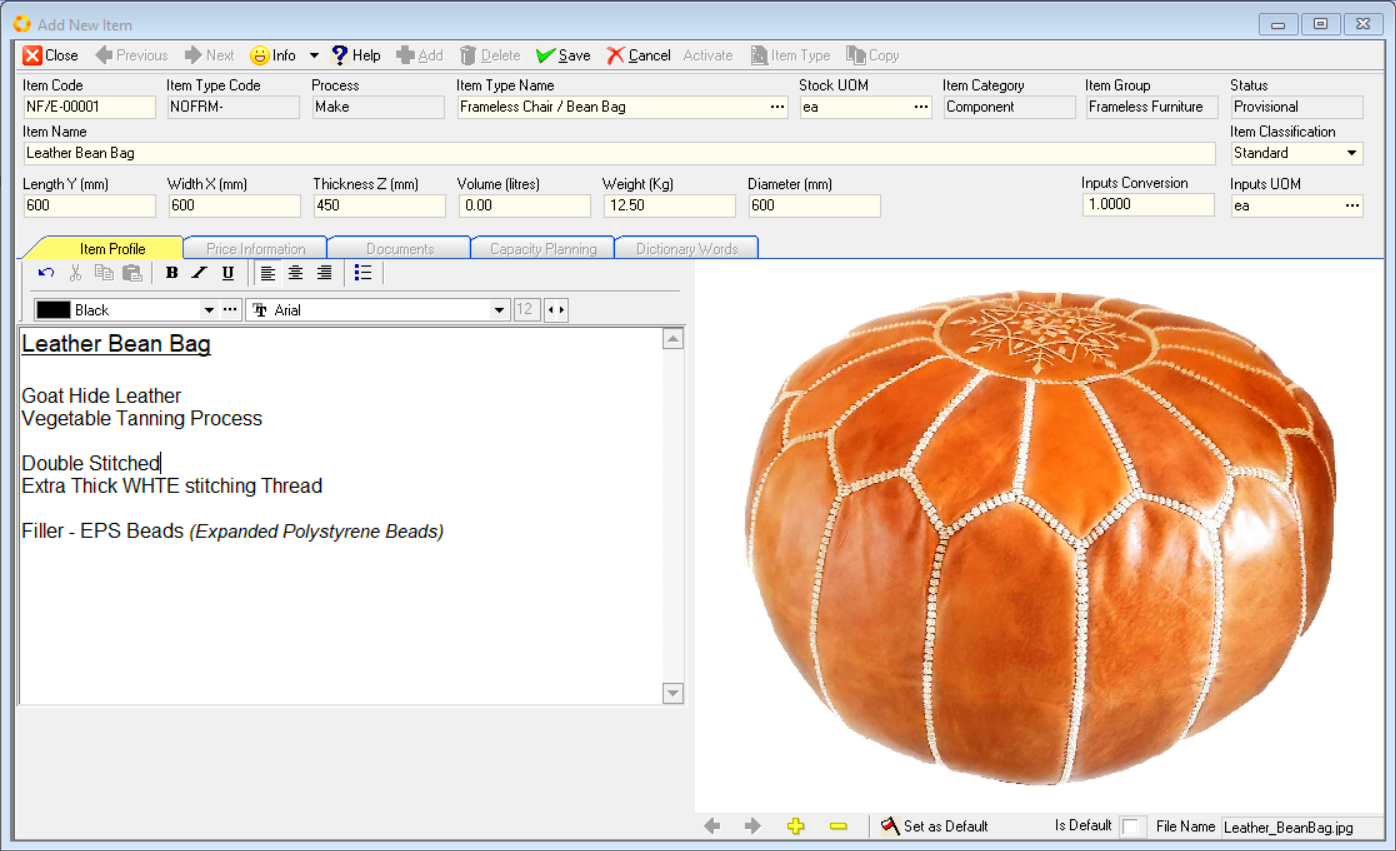
-
You can add as many images as you wish to the Product you are adding to the Product Catalogue.
-
To remove an image, use the left and right arrows to scroll to the image you wish to remove and then click the yellow - (minus) button.
-
Click the Save button on the Form Bar navigation once you have captured all the relevant Item Profile information.
Add Cost Price and Selling Price Information
Once you have entered the Product Name in the Catalogue you will need to enter information about the Cost Price, Lead Time, Quality, Rates and Selling Prices for the item you are adding to the system.
- Click on the Price Information tab to enter pricing information about the product.
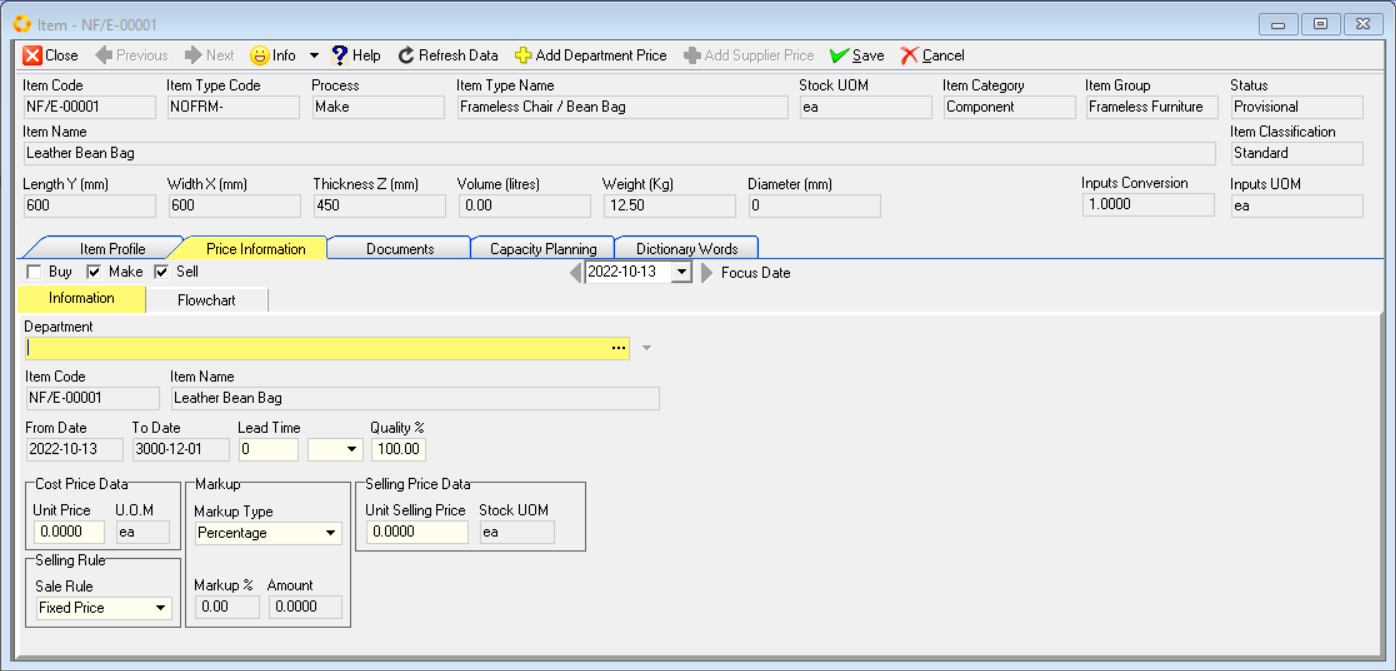
- Click on the three dot button to select the name of the Department that makes or sells the Product you are adding to the database.
- Choose the name of the correct Department and then click the Select button.
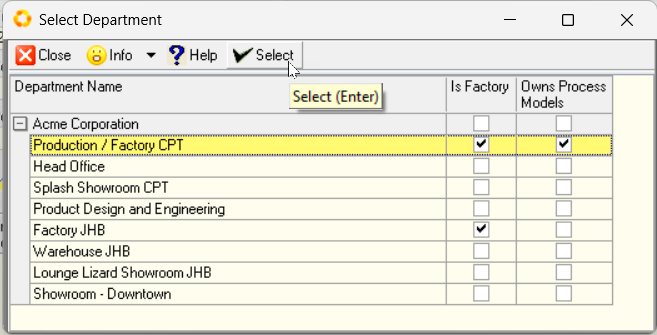
-
Enter the number of days it takes from when the customer orders the product until it can be delivered.
-
Select "Days" from the drop down list.
-
Enter the quality as "100%".
Press [ TAB ] on your keyboard to move from one field to the next.
-
If your company buys the item from an external Supplier you will need to enter Cost Price information in the Supplier Name screen.
-
If your company makes the item internally, you will need to enter Cost Price information in the Department screen.
-
If your company sells the item to its customers, you will need to enter Selling Prices.

-
Enter the Cost price in the Unit Price field.
-
Select a selling rule. This is either "Do Not Sell", "Fixed Price" or "Dynamic Price".
-
Enter the Markup Type as either a "Percentage" or an "Amount".
-
Enter the Markup if the Selling Rule is Dynamic Price or enter the Selling Price if the Selling Rule is Fixed.
The system calculates the variable you have not entered.
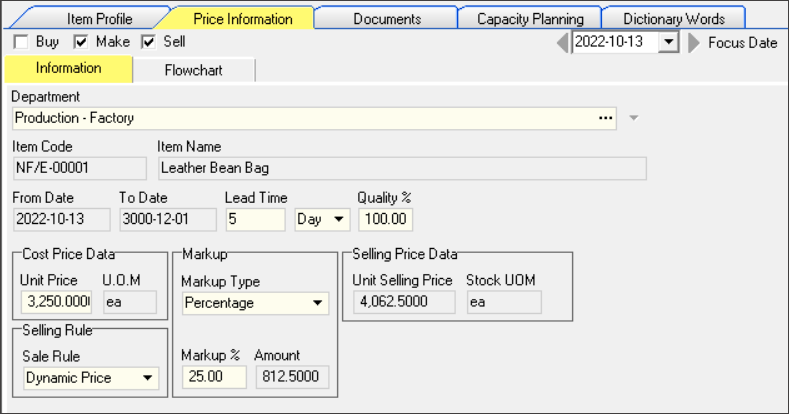
- When you have completed entering price information, click the Save button.
Add Documents to a Product Profile
The system enables you to link one or more documents, pictures and videos to the record in the database.
- Click on the Documents TAB.
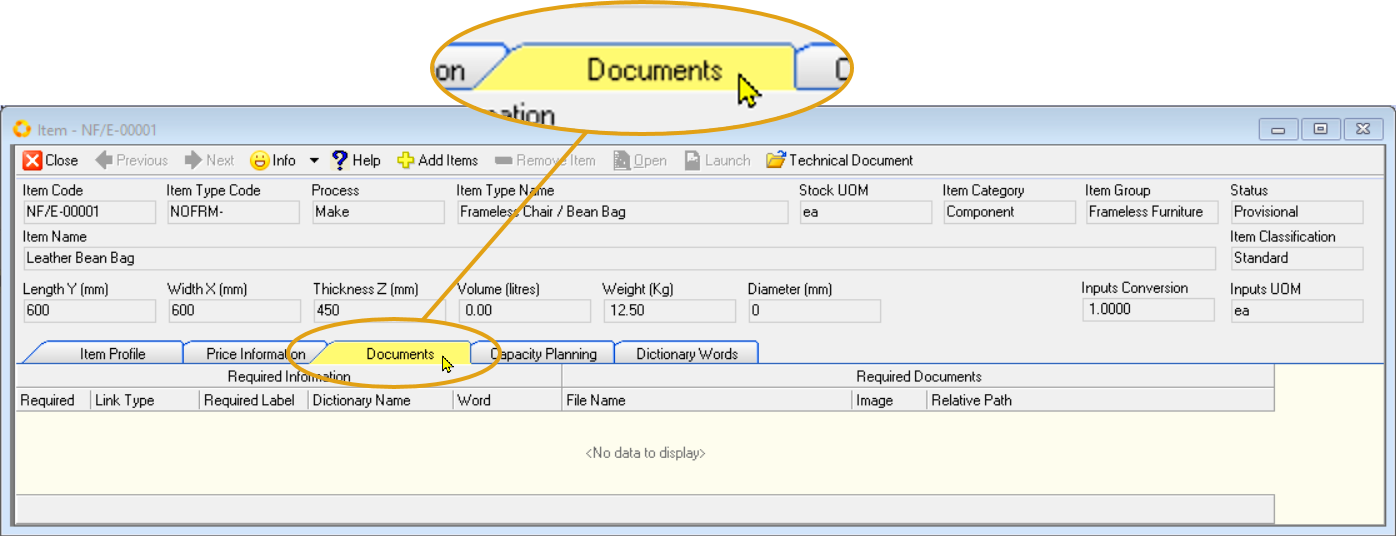
- Click the yellow + button at the top of the form to Add a New Document.
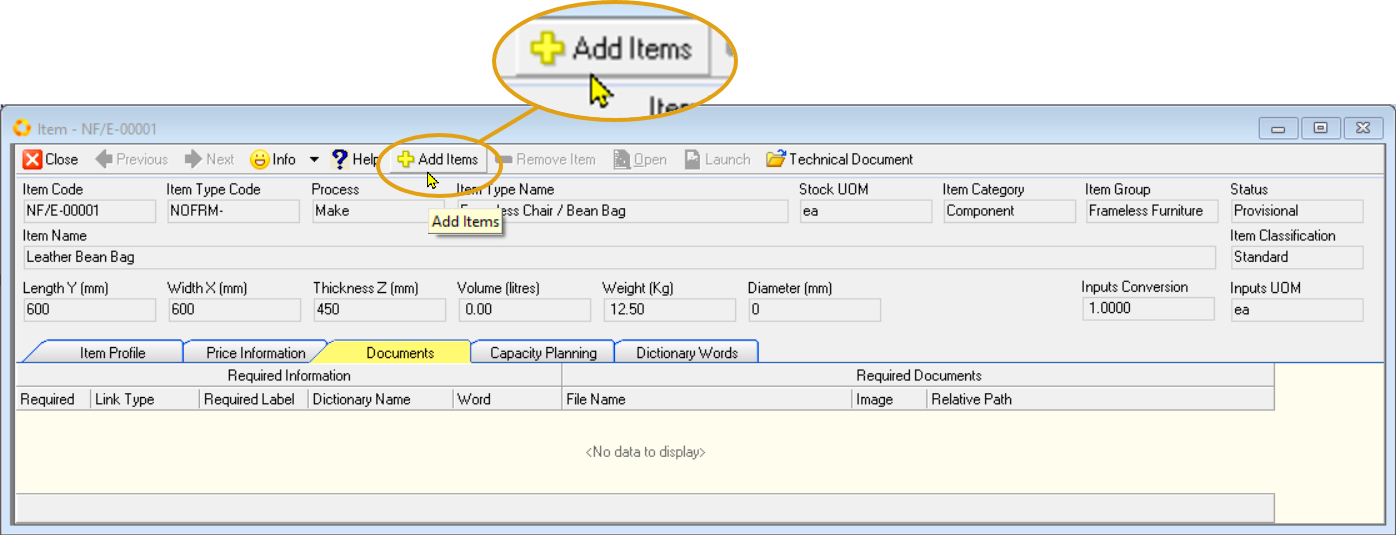
- The program will open the Windows Explorer screen. This allows you to browse to any file on your computer or network.
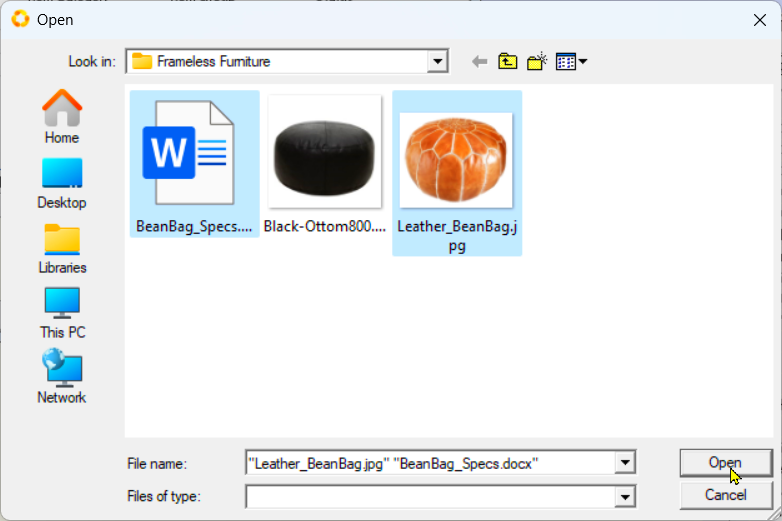
-
Once you have found the correct file(s) you wish to link to the Product Name, select it/them and then click the Open button.
-
The program will close the Windows Explorer screen and will display the name of the file you have linked in the Document File Name list.

-
You can add as many documents of as many different types as you wish to the Product you are adding to the Product Catalogue.
-
To remove a file, click on the name of the file you wish to remove from the list of Documents and then click the yellow - (minus) Remove Item button.
Activate a New Product Record
The program only allows you to edit Inactive records.
-
To prevent users from changing a record for which all the information has been finalised, click the Item Profile tab.
-
Then click the Activate button.
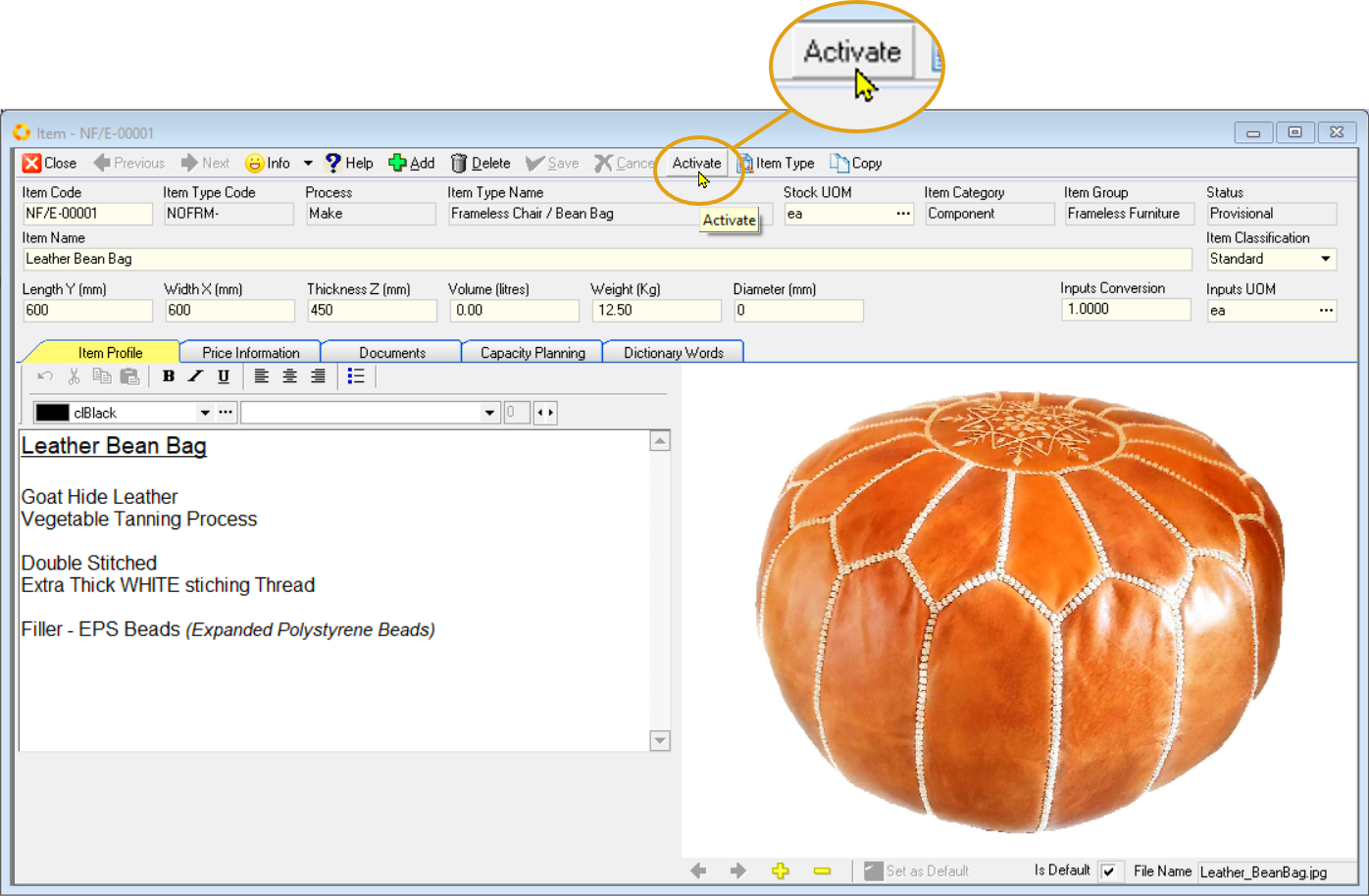
- The program will mark the record as Active.
This allows it to be selected for all Sales Quotes and Sales Orders and prevents users from making changes to it without approval.
This is the end of this procedure.